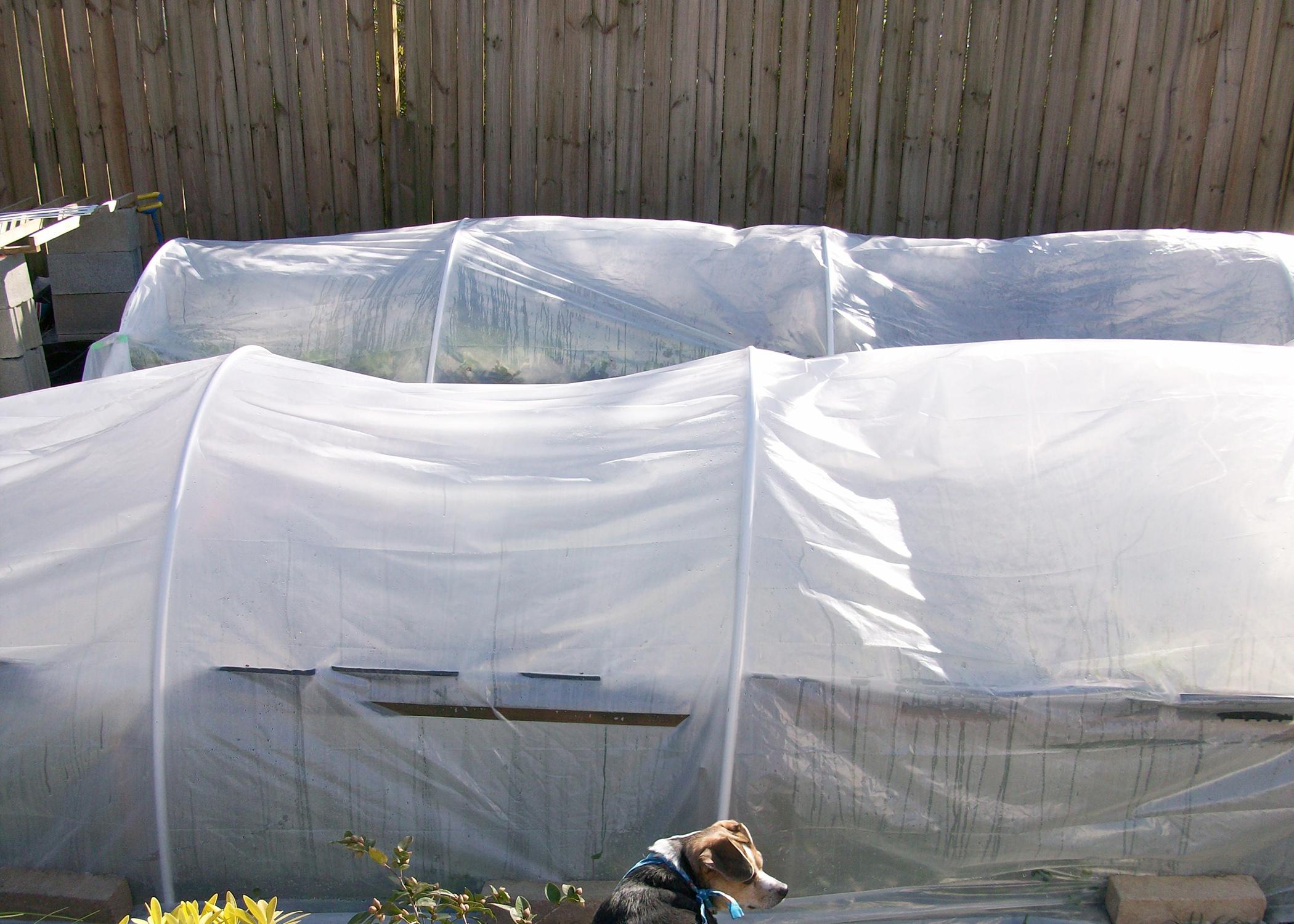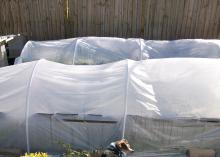Information Possibly Outdated
The information presented on this page was originally released on November 4, 2013. It may not be outdated, but please search our site for more current information. If you plan to quote or reference this information in a publication, please check with the Extension specialist or author before proceeding.
Prepare plants now for the cold weather
All gardeners know this is going to happen every year, and yet many are still surprised when it does. I’m talking about the arrival of freezing temperatures.
Despite the pleasant fall temperatures we are enjoying, there will come a time when we need to protect some of our landscape plants from freezing temperatures. And since no one reliably predicts the weather, now is a good time to get ready.
Many calls I receive are from gardeners who confuse frosts and freezes. While both are cold weather events, they are completely different.
Frosts relate to the amount of water in the air. When air temperatures drop low enough, the saturated water in the air condenses onto surfaces as dew. An example of this is a cold glass of iced tea sweating on a hot summer day.
Frosts typically occur when the sky is clear and the wind is calm. Heat absorbed by the soil and plants during the day is radiated into the air at night. Calm wind conditions allow surface temperatures to drop below freezing while higher elevations remain warmer.
If the surface temperature and dew point are below freezing, ice crystals form on the cool surfaces. Sometimes the air is too dry for ice crystals to form, but a frost event has still occurred. A frost can occur when the air temperature is above 32 degrees.
A freeze occurs when a mass of cold air moves into the area. This weather event often happens under windy conditions with a cloud cover. A typical freeze scenario is very different from a frost.
When the outside air temperature falls below 32 degrees for a certain number hours, a freeze can cause plant damage. A hard freeze occurs with temperatures below 28 degrees for a certain number of hours.
So what’s a gardener to do to prepare for these events? Fortunately, we have lots of resources to keep us informed on the weather. TV, radio and weather websites can help us know when one is expected, but even then we can be fooled.
A couple of years ago, I followed the TV forecast that called for 36 degrees, and I didn’t cover my lettuce plants. When I woke up the next morning, it was 26 degrees outside. It’s a good thing most of our leafy green, cool-season vegetables can tolerate some fairly low temps.
So knowing the cold is coming, here are some tips to help your landscape and winter vegetables bundle up.
Make sure your plants are well watered going into a cold weather event. As water freezes, it releases heat that helps insulate the root system during cold snaps, especially in container-grown plants. Moisture in the potting mix acts as a buffer to falling temperatures, providing insulation and releasing heat as it cools.
Plants grown in containers have the advantage of being portable. When temperatures dip toward freezing and below, an easy solution is simply moving the plants into the house or garage for a couple of days. If moving the plants inside is not an option, simply place them up against the house for some protection. West- and south-facing walls are best, as they absorb and release more heat energy from the sun.
Maintain 2 to 3 inches of mulch around the base of landscape plants to conserve water and act as an insulation blanket for the roots.
Cover in-ground plants with plastic sheets, cloth, boxes or something similar. Ideally, the foliage should not touch the covering because frost and ice will form on these surfaces. Quick hoops are an ideal way to cover and protect vegetable crops from potential cold-weather damage. This approach worked very well in my garden last year.
Whatever method you use, just be ready to put it into practice on short notice as we move further in November and another Mississippi winter.








